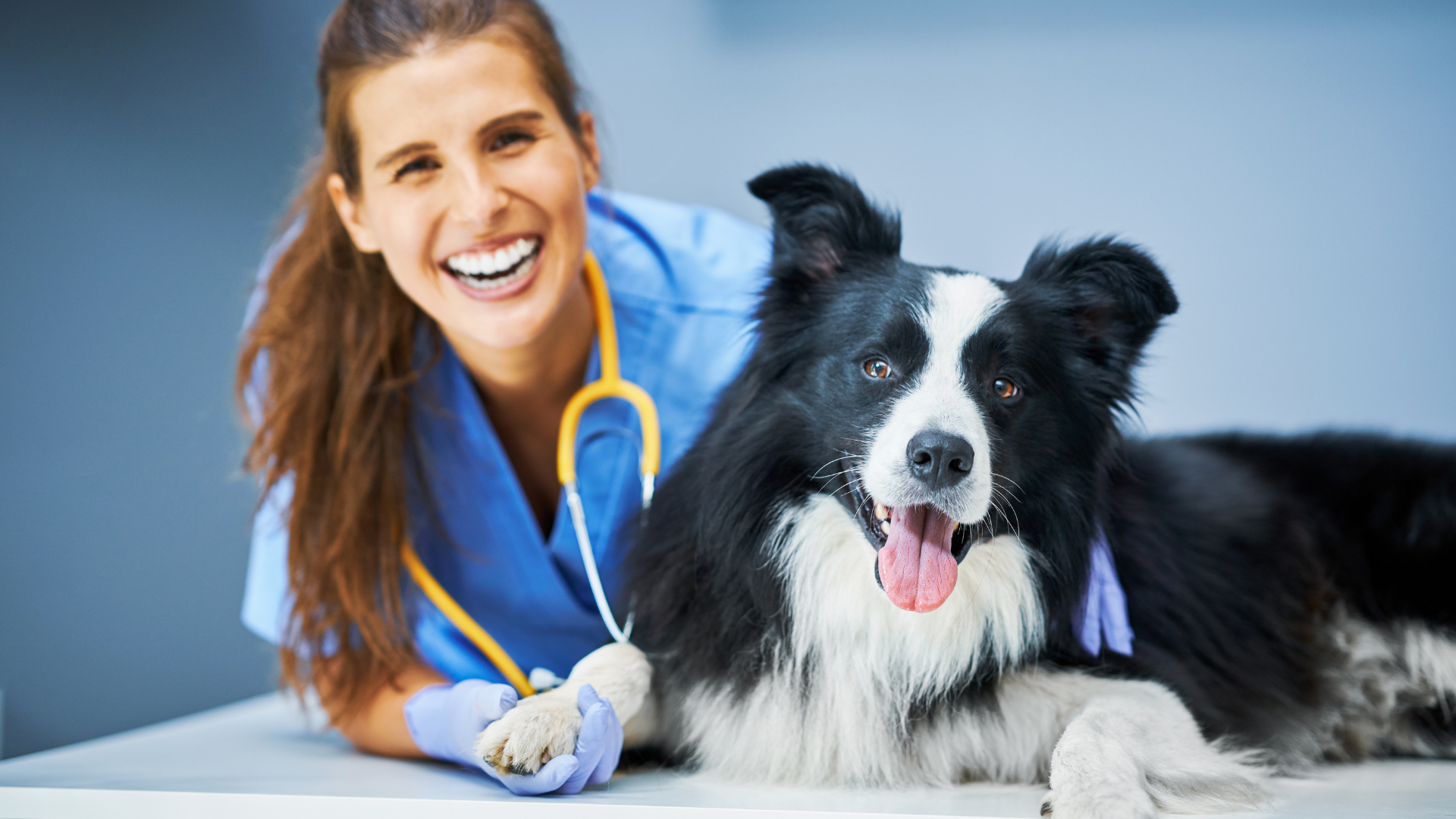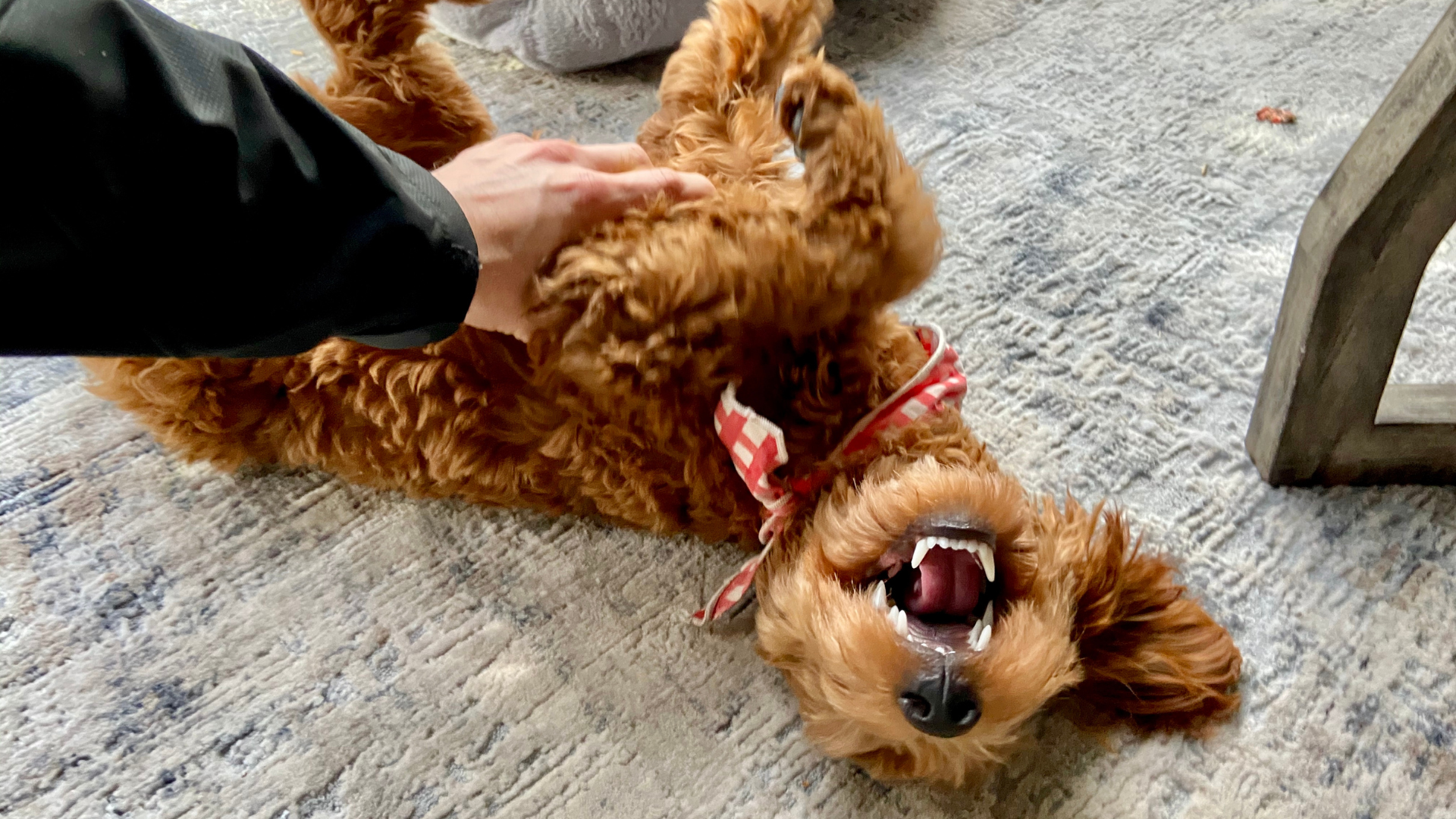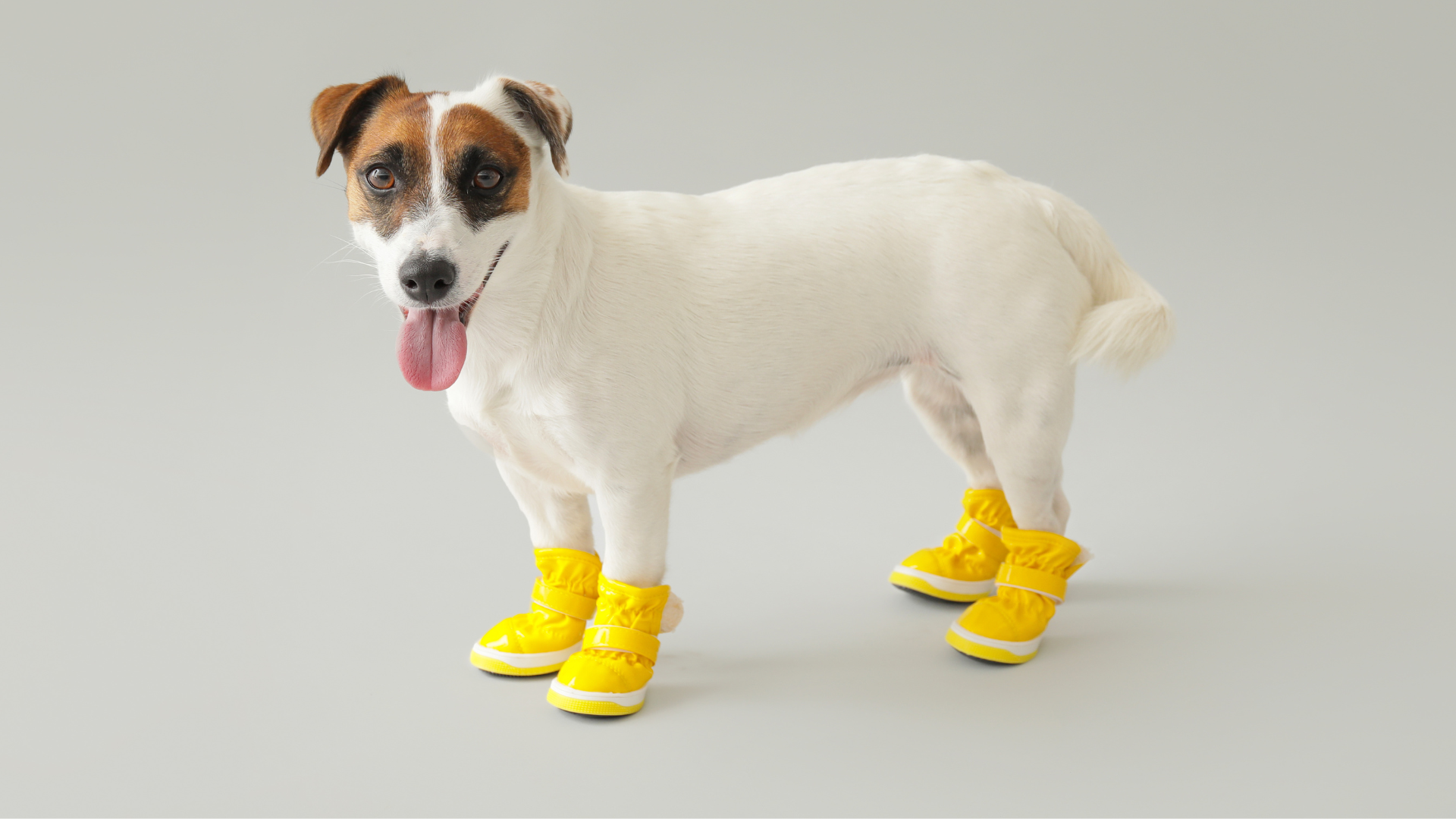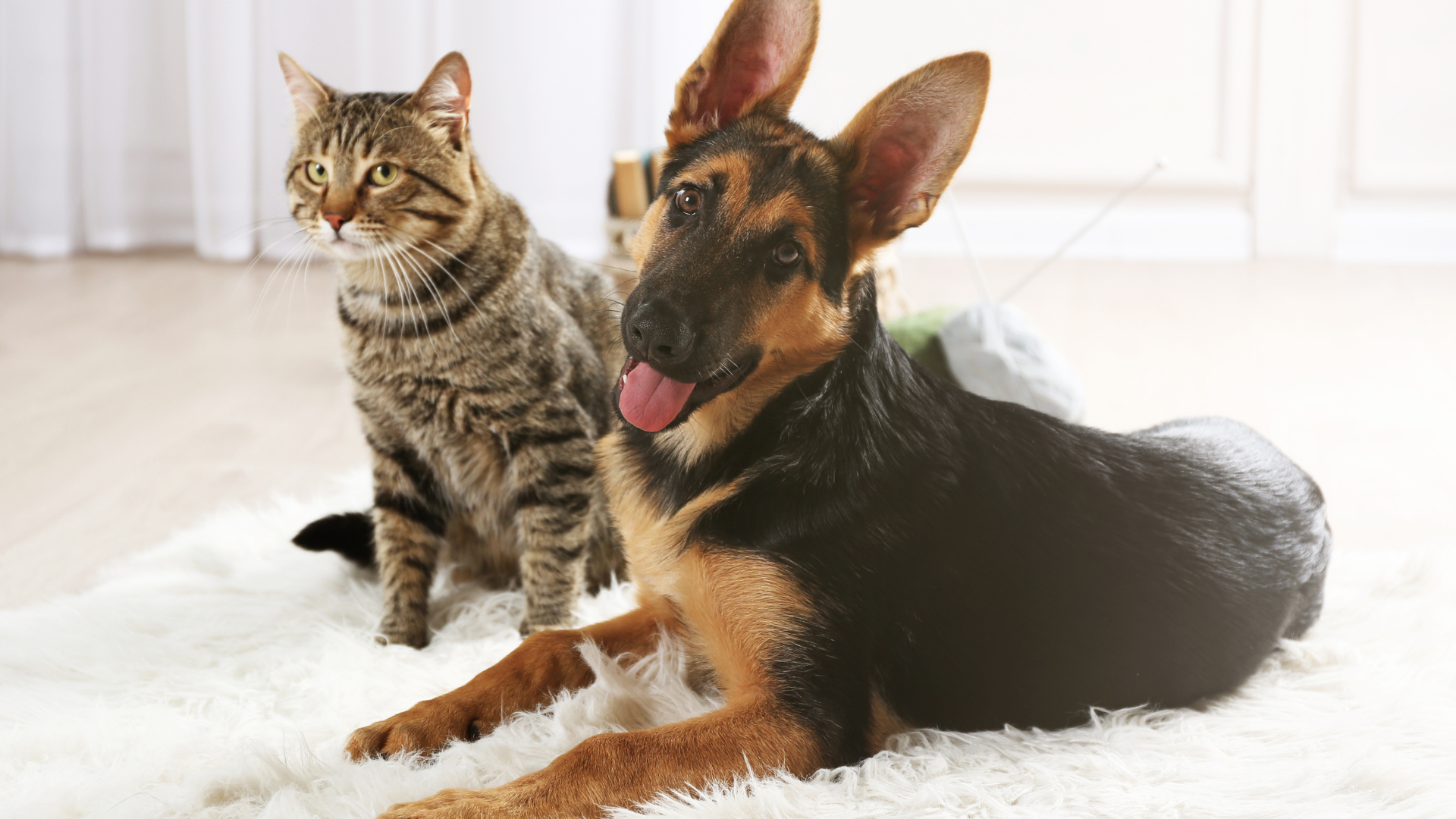Every dog owner has witnessed it—the wagging tail that greets you at the door, swishes during playtime, or even flickers while your pup is dreaming. But have you ever stopped to ask yourself, what does your dog’s tail wagging really mean? Many people assume it’s always a sign of happiness, but the truth is far more complex.
The science behind your dog’s tail wagging reveals that it’s a sophisticated form of body language that conveys everything from excitement to anxiety. Understanding this behavior can deepen the bond you share with your dog and help you respond more thoughtfully to their needs. Just as we strive to create safe and natural living environments with Good Natured Brand, recognizing the signals our pets send helps us build homes where both people and pets feel secure and understood.
Why Do Dogs Wag Their Tails? The Science Explained
Dog tail wagging is not random—it’s controlled by a network of muscles and nerves that connect directly to the brain’s emotional centers. Research shows that wagging is part of the limbic system’s response, the same part of the brain that governs emotions like fear, excitement, and affection.
When a dog feels an emotional surge—positive or negative—those signals translate into tail movement. This is why wagging can look different depending on whether your dog is thrilled to see you, cautious around a stranger, or uncertain in a new environment. Essentially, a wagging tail is a visible window into a dog’s internal emotional world.
The Evolutionary Purpose of Dog Tail Wagging
Before dogs were domesticated, their ancestors used tails as a critical tool for survival and communication. Wolves and wild canines wagged their tails to signal submission, readiness to play, or awareness of danger within their pack.
Tail wagging allowed these animals to coordinate group activities, avoid conflict, and strengthen social bonds. Over time, domesticated dogs inherited and amplified these behaviors, making tail wagging one of their most recognizable communication tools today.
For modern pet parents, this means that when your dog wags their tail, they’re not just showing a mood—they’re tapping into thousands of years of evolved social signaling.
What Different Types of Dog Tail Wagging Mean
Not all tail wags are created equal. The speed, height, and stiffness of a wag can tell you a lot about your dog’s emotional state:
-
Fast wagging tail: Usually excitement or joy, like when greeting their favorite human.
-
Slow wagging tail: Indicates uncertainty or cautiousness.
-
High stiff wag: Often a sign of alertness or even aggression—think of a guard dog noticing a stranger.
-
Low tucked wag: Fear, nervousness, or submission.
-
Neutral gentle wag: A relaxed, content dog settling into a calm environment.
Understanding these subtle differences can prevent misinterpretations. Just because a dog is wagging its tail doesn’t always mean it’s friendly. Context matters.
The Direction of Dog Tail Wagging and Its Meaning
One of the most fascinating discoveries in canine science is that the direction of a dog’s tail wagging can signal different emotions.
-
Right-side wagging: Linked to positive feelings, such as excitement or happiness when greeting a loved one.
-
Left-side wagging: Associated with stress, caution, or negative emotions.
Dogs are sensitive to these signals. Studies show that when dogs see another dog wagging predominantly to the left, they become more cautious, whereas right-side wagging makes them feel more relaxed.
This directional signaling proves that tail wagging is not just instinctive—it’s intentional communication.
The Emotional Side of Your Dog’s Tail Wagging
Tail wagging is deeply tied to a dog’s emotional state. It’s their way of expressing a spectrum of feelings:
-
Happiness and affection: That joyful full-body wag when you walk in the door.
-
Anxiety or stress: A low, shaky wag that signals discomfort.
-
Empathy: Some dogs wag slowly when comforting their humans during sad moments.
-
Excitement: Rapid, sweeping wags when anticipating a treat or a walk.
Much like humans use facial expressions and gestures, dogs rely on their tails to broadcast emotions. Learning to read these cues can help you support your dog better—offering comfort when they’re stressed or celebrating alongside them when they’re thrilled.
Puppies and Dog Tail Wagging Development
Puppies don’t wag their tails immediately after birth. Tail wagging begins around three to four weeks of age, coinciding with the period when puppies become more social with their littermates.
At first, puppy tail wagging seems clumsy, but it quickly evolves into intentional communication. Puppies learn from observing their mother and siblings, figuring out that wagging is part of greeting, playing, and establishing social bonds.
This early tail-wagging practice sets the stage for how dogs will use their tails throughout their lives, making it a vital part of their social development.
Breed Differences in Dog Tail Wagging
Not all dogs wag in the same way. Breed differences play a big role:
-
Curly-tailed breeds (like Pugs and Shiba Inus): Their wagging may appear tighter or less expressive, but the signals are still meaningful.
-
Docked-tail breeds (like Boxers or Dobermans): Tail communication is limited, which means these dogs often use other body cues like ears and posture more prominently.
-
Long-tailed breeds (like Golden Retrievers): Their wags are more visible and often exaggerated, making emotions easier to interpret.
Understanding breed-specific communication helps pet parents avoid misunderstandings and appreciate the nuances of tail wagging across different dogs.
Dog Tail Wagging in Social Interactions
Dogs use their tails not only to communicate with humans but also with each other. In canine interactions, tail wagging signals intent:
-
Friendly greeting: Relaxed, sweeping wags.
-
Play initiation: Fast wagging often paired with play bows.
-
Warning signal: Stiff wag combined with a rigid body.
When dogs interact with humans, wagging may be exaggerated because dogs have learned that humans respond positively to it. However, it’s important to remember that wagging is not always an invitation for strangers to approach. Reading the whole body is key.
Just as we maintain clean, stress-free spaces with Carpet Deodorizers and natural All-Purpose Cleaners, recognizing and respecting your dog’s signals ensures healthy, safe interactions in social settings.
Is Tail Wagging Always a Sign of Happiness?
One of the most common misconceptions about dogs is that tail wagging always equals happiness. While a joyful wag does exist—like when your dog greets you after a long day—the truth is more complex. Tail wagging can also signal nervousness, stress, or even aggression.
For example, a stiff, high tail wag is often a warning, not an invitation. Similarly, a slow, hesitant wag can indicate insecurity rather than joy. Recognizing these subtle differences can prevent misunderstandings and help keep interactions safe, especially when your dog meets new people or other animals.
When to Be Concerned About Your Dog’s Tail Wagging
Although tail wagging is usually normal, there are times when it may be cause for concern. Some red flags include:
-
Injury or pain: If your dog suddenly stops wagging their tail or seems to wag less, it could indicate injury or conditions like “limber tail syndrome.”
-
Excessive wagging: Overly repetitive wagging without context might point to anxiety or a behavioral issue.
-
Difficulty moving the tail: Stiffness or reluctance to wag may indicate arthritis or spinal discomfort.
If you notice these signs, a vet check-up is a good idea. Just as we take care of our homes with safe, natural solutions like All-Purpose Cleaners, maintaining your dog’s health requires attentive care and timely action.
How to Respond to Different Tail Wagging Signals
Understanding your dog’s wag is only the first step—how you respond is just as important.
-
Happy wagging: Reinforce it with praise, play, or affection. This builds positive associations.
-
Nervous wagging: Offer reassurance, space, and calming routines. Don’t force interactions.
-
Aggressive or stiff wagging: Respect boundaries. Remove potential stressors and avoid confrontation.
-
Fearful wagging: Provide a safe retreat and soothing environment.
Responding appropriately ensures your dog feels understood, reducing stress for both pet and owner.
Creating a Comfortable Environment for Your Dog’s Tail Wagging
A dog’s emotional state—and therefore their tail wagging—can be influenced by their environment. Dogs thrive in spaces that are clean, safe, and stress-free.
-
Odor-free living spaces: Dogs rely heavily on scent. A fresh-smelling home kept with Carpet Deodorizers creates a more relaxing environment.
-
Clean bedding and fabrics: Wash dog blankets and covers frequently with Laundry Powders to eliminate odors and allergens.
-
Non-toxic cleaning: Using safe All-Purpose Cleaners ensures you maintain cleanliness without introducing harmful chemicals that could stress your dog.
When your dog feels comfortable in their space, their tail wagging is more likely to reflect joy and relaxation rather than anxiety.
Dog Tail Wagging Compared to Other Canine Body Language
While the tail is a major communication tool, it’s only part of the picture. To fully understand what your dog is saying, you need to consider the rest of their body language:
-
Ears: Forward ears show alertness, while pinned ears signal fear or submission.
-
Eyes: Soft, relaxed eyes indicate calmness, while wide, intense stares may suggest aggression.
-
Body posture: A loose, wiggly body usually means playfulness, while a stiff stance can signal tension.
Tail wagging should always be interpreted in combination with these cues. For example, a wagging tail paired with stiff posture and raised hackles is very different from a wag paired with a bouncy play bow.
Fun Facts About the Science of Dog Tail Wagging
Tail wagging isn’t just practical—it’s fascinating too. Here are some fun scientific insights:
-
Dogs wag unconsciously in their sleep: Dreaming about play can trigger tail movement.
-
Tail wagging burns energy: Active dogs wag so enthusiastically that it contributes to their daily activity.
-
Guinness World Record wags: Some dogs have even been recognized for having the fastest tail wag.
-
Humans influence wagging: Dogs wag more enthusiastically for their owners than for strangers, proving the strength of the human-dog bond.
These fun tidbits make tail wagging one of the most endearing and scientifically fascinating aspects of canine life.
Frequently Asked Questions About Dog Tail Wagging
Why do dogs wag their tails in their sleep?
They’re likely dreaming about activities, and the brain signals extend to their tails just as they would during waking play.
Why do dogs wag their tails at strangers?
It can mean curiosity, excitement, or even cautiousness. Context and body language are key.
Can tail wagging be trained or controlled?
Not directly. Wagging is tied to emotions, though you can influence it through training that fosters confidence and joy.
Why do some dogs wag only for their owners?
Dogs form strong bonds and may reserve their most enthusiastic wags for the people they trust and love the most.
Do cats wag their tails for the same reasons as dogs?
No. Cats’ tail movements often signal agitation or hunting focus, while dogs’ wags are broader emotional signals.
Conclusion
The science behind your dog’s tail wagging shows us that it’s far more than a happy gesture—it’s a complex language of emotion, instinct, and communication. From the speed and direction to the context of the wag, each movement tells a story about how your dog feels in the moment.
As pet parents, the more we learn to read these cues, the stronger our bond becomes. Supporting your dog’s well-being goes beyond interpreting their signals—it also means creating a home where they feel safe, relaxed, and cared for. Using natural, eco-friendly solutions like Carpet Deodorizers, Laundry Powders, and All-Purpose Cleaners ensures your pet’s environment matches the love and attention you give them.
For more insights into pet behavior, eco-friendly living, and natural cleaning, visit the Good Natured Brand Blog or explore the Main Page for products that help you and your dog live naturally, together.


















